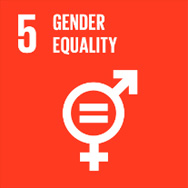Is it helpful to discuss population?
The United Nations projects that between 7.3 to 15.6 billion people will be living on Earth by 2100. Despite unevenness in our respective Footprints, as population increases, so does pressure on the planet. Powerful, people-positive solutions, such as empowering women and girls, are well known and promoted. And the social benefits are immediate and highly valuable in their own right. Ecological benefits manifest more slowly, yet the impact over time is massive.
However, population is a sensitive topic, full of taboos, prejudices, and a tragic, sordid history. The simple act of raising the topic may turn people off from the sustainability conversation altogether. At the same time, avoiding the population conversation does nothing to address one of the most significant contributors to humanity’s increasing demand on the planet.
Given the complexity of the population conversation and the care needed to appropriately address the related historical injustices, we believe it is important to hear directly from others. In particular, we want to highlight the voices of individuals who work in population-related fields or at the intersection of health and environment. Additionally, it was important to us that we included the voices of people who may or may not have children yet. Most of all, we wanted to elevate the voices of people who are part of groups that have been marginalized or targeted in the past.
So, is it helpful to discuss population? Below, we have compiled a range of viewpoints and additional assessments, including Global Footprint Network’s view articulated by Founder and President Mathis Wackernagel.

Investing in smaller families through the empowerment of women is core to “SDG 5 Gender Equality” which calls for ending all forms of discrimination against all women and girls everywhere.
*NOTE: If we continued as now, we would be at 9.7 billion. This is the UN medium variant estimate. If each mother or father had on average 1.8 children (= 0.9 children per person), compared to 2.3 currently, and parenthood was delayed by 2 years, we’d be at 7.7 billion in 2050. You can play with other assumptions using this downloadable cohort model. Assuming humanity’s Ecological Footprint per capita stays at 2020 levels (2.47 gha per person), the difference in 2050 would be 49 days.
By Vanessa Balintec
By Genevieve Tarino
By Sérgio Ribeiro
By Florence Blondel
By Angie Nathalia Romero Gomez
By Anne and Paul Ehrlich
By Anonymous
By Phil Fulton
By Carolina Rodríguez Balda
By Thibaud Aronson
By Rupal Verma
By Esnath Divasoni
The trends in population growth can be changed through promotion of education, especially for girls. Read More
By Hannah Evans
By Erika M. Arias
By Majka Baur
By Lilia Angelone
By Brynn McGlinchey
By Elizabeth Holloway
By Jayani and Sathya
By Thomas Schinko
By Julian Willming
By Erin Bucchin
By Lila Sheira
By Céline Delacroix
By Mathis Wackernagel
Additional Resources
- Read more in our blog post “Empowering women for a world that works for all.”
- Read more about the impact of population size on carbon emissions.
Population Modeling
Population projections are difficult to model. A discussion of possible population scenarios was published in Nature in September 2021, concluding that the range may be between 9 to 12.5 billion people by 2100. If the world as a whole were to embrace reproductive rates similar to those of Germany, the Goa and Kerala provinces of India, Italy, Japan, Portugal, South Korea, Spain, or Thailand, there could be fewer than 4 billion people on the planet by 2100, even as longevity increases. Or less than 3 billion if we followed Taiwan’s rates. And none of these places have policies which place restrictions on reproduction.
Try our global Footprint scenario tool. Design possible futures by choosing key parameters that shape overshoot: how much each of us use, how many of us there are on the planet, and how quickly changes in consumption and family size are implemented. The tool then displays how your choices would affect humanity’s trajectory.
Girl Power: Camfed’s Answer
One of the most powerful yet overlooked opportunities for tackling resource constraints and mitigating climate change is girls’ education.
Population Modeling
Population projections are difficult to model. A discussion of possible population scenarios was published in Nature in September 2021, concluding that the range may be between 9 to 12.5 billion people by 2100. If the world as a whole were to embrace reproductive rates similar to those of Germany, the Goa and Kerala provinces of India, Italy, Japan, Portugal, South Korea, Spain, or Thailand, there could be fewer than 4 billion people on the planet by 2100, even as longevity increases. Or less than 3 billion if we followed Taiwan’s rates. And none of these places have policies which place restrictions on reproduction.
Try our global Footprint scenario tool. Design possible futures by choosing key parameters that shape overshoot: how much each of us use, how many of us there are on the planet, and how quickly changes in consumption and family size are implemented. The tool then displays how your choices would affect humanity’s trajectory.
Girl Power: Camfed’s Answer
One of the most powerful yet overlooked opportunities for tackling resource constraints and mitigating climate change is girls’ education.






